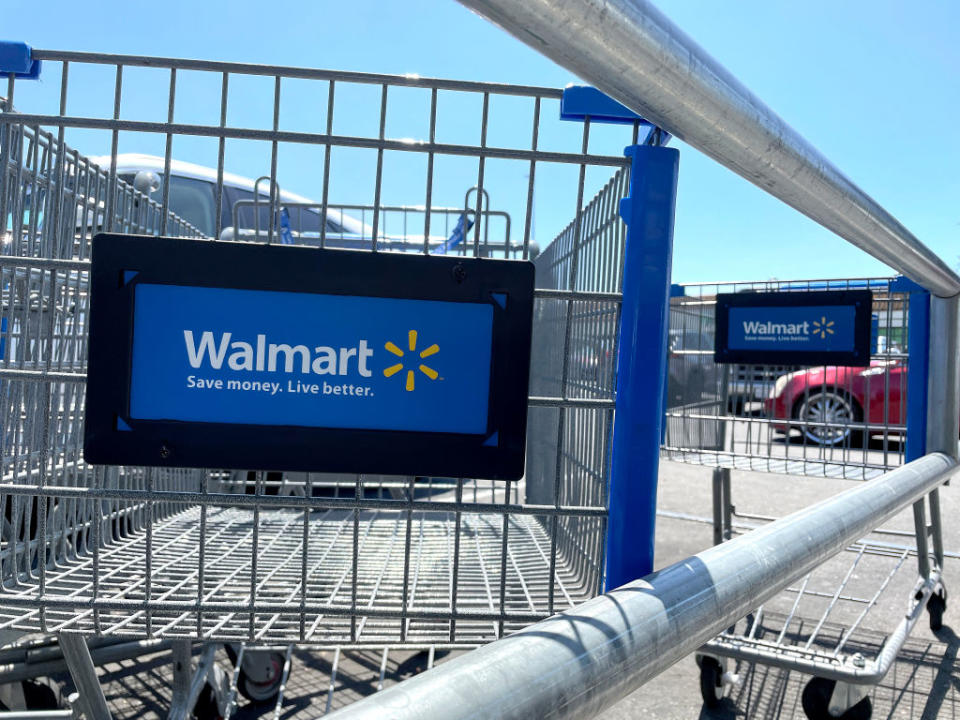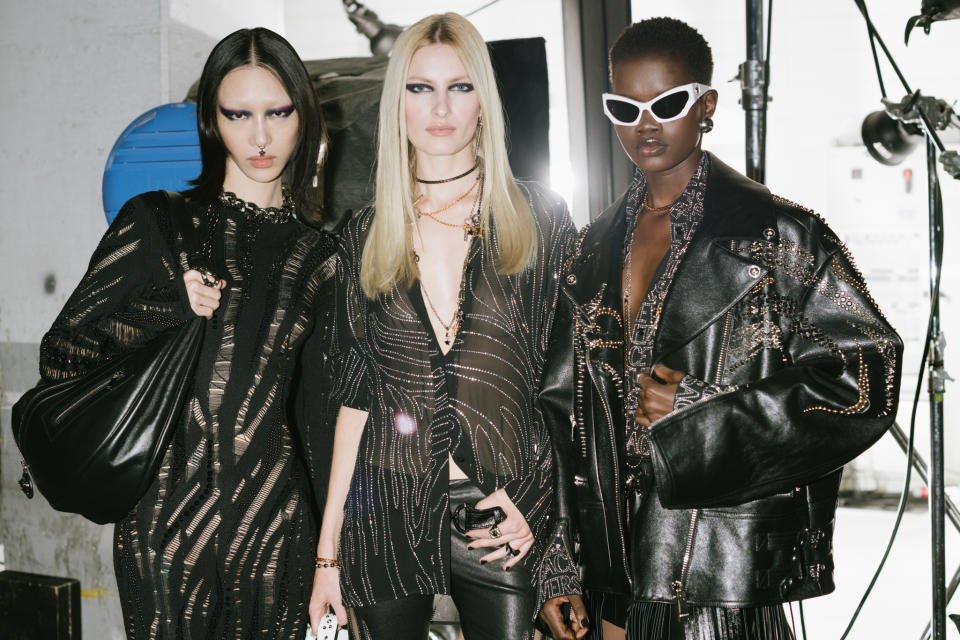The Retail Pain in the Fed’s Plan to Save the Economy

Wall Street welcomed some inflationary relief on Tuesday, driving the Dow Jones Industrial Average up more than 700 points for a time — but the cheering didn’t last long and won’t do much to ease the retail pain that’s likely to persist well into 2023.
November prices on goods and services rose 7.1 percent from a year ago, according to the latest reading of the U.S. Labor Department’s Consumer Price Index. While that’s a sky-high increase that, before this year, had not been seen since 1982, it still marked a slowdown from 7.7 percent in October and 8.2 percent in September.
More from WWD
But doubts persist.
After the Dow’s initial burst higher, investor sentiment waned and Blue Chip stocks traded up 0.3 percent, or 103.60, to 34,108.64.
Some economists don’t think inflation is slowing quite as much as the numbers suggest. Stephen Stanley, chief economist at Amherst Pierpont Securities, acknowledged that prices “shocked to the downside” for two months in a row, but attributed the declines “more to temporary factors than to a persistent downshift in price pressures.”
Stanley pointed to the “overwhelmingly negative” price changes in categories that often add “noise” to the numbers, such as used vehicles, airfare and hotel rates. Apparel, footwear and accessories prices rose 3.6 percent last month — the slowest increase in the category April 2021.
Already, the Federal Reserve has moved its benchmark interest rate up six times this year — from 0 to 0.25 percent to start to 3.75 percent to 4 percent. The central bank is still expected to boost that again, by 0.5 percent, on Wednesday.
While this macroeconomic back and forth pitting interest rates against price increases can sound esoteric, higher prices are already hurting consumers now and higher interest rates are going to start hurting them more.
Fed chairman Jerome Powell doesn’t want to crush retail — that’s just a side effect.
Powell and his Fed colleagues are pushing interest rates higher to cool the job market, which in turn cuts back on consumer spending.
Retail will just be collateral damage as the U.S. unemployment rate rises from a historically low 3.7 percent and as fears of recession loom. (The picture is much the same abroad with regional differences — energy worries in Europe amid Russia’s war in Ukraine, China’s pandemic related slowdown and so on).
“Powell is going to do whatever it takes to get inflation under wraps and that probably means inducing some pain,” said Erik Lundh, principal economist at The Conference Board. “His job and his tools are designed to take care of the demand side of things. He couldn’t fix the supply chain last year, he couldn’t tell OPEC to drill, baby drill.”
Ultimately, “taking care” of demand can’t be good for retail.
“We expect broad spending in the economy, especially on goods, to not really fare too well in the fourth quarter and moving into 2023,” Lundh said. “We’re forecasting that the U.S. enters into a recession this quarter and, if not this quarter, then definitely by [first quarter] next year and it will run two to three quarters.
“The first half of next year is going to be more challenging than the second half,” he said. “It takes a while for consumer psychology to adapt and all these things to wash through the economy.”
Fashion — and the consumer sector generally — is just a pawn in the high stakes game to gently cool an overheating economy.
Still, there’s seemingly universal agreement that prices need to be brought down, particularly before they become entrenched and take on a momentum of their own.

Retail has also been hurt by runaway inflation, with Walmart shoppers, for instance, making tough choices between food and fashion. And the cracks are beginning to show higher up the price spectrum, with even stalwarts like Nike Inc. and VF Corp. warning of weakness as consumers digest inflation, fears of recession, the lingering pandemic and everything else.
Last week, John Idol, who is chairman and chief executive officer of Versace and Michael Kors parent Capri Holdings, said shoppers in North America are “relatively healthy at this point,” but sent up a warning flare.
“We definitely are concerned about next year,” Idol said. “And we don’t think we’re going to see it probably in this quarter or maybe a little bit into next quarter. But we think kind of the back half of next year, we’ve got to be cautious about what happens to the North American consumer, which has been very resilient.”
One of the problems — for retail and everyone else — is that the science of economics still involves a lot of art.
Like weather forecasters who can see the hurricane forming but don’t know how strong it will be when it hits land, economists are trying to understand large complex systems with many inputs and cross currents.
The difference for Powell & Co. is that they control the cold front and can crank up interest rates, making it more expensive for businesses, consumers and investors to borrow — cooling everything off.
The danger is a deep freeze.
Scott Hoyt, senior director of Moody’s Analytics, said: “It’s going to be tough, there’s no way around that. The Fed’s goal is to make sure the consumer has less money come into their pockets. The issue, particularly for the high-end consumer, is they still have money in their pockets because they saved during the pandemic.”
The strong consumer balance sheet has been a theme headed into the back half of the year — signaled out by retailers as a point of strength. But it’s also a scenario that could keep people spending even as the Fed clamps down, prompting the central bank to take more drastic action with a more dramatic hit to the economy.
No one knows how it all shakes out.
“The smart economists know what the channels are and they know what the implications…are going to be,” Hoyt said. “The problem is they know it directionally, they don’t know it in terms of either specific magnitudes or time frames. A lot of what the Fed’s doing today is going to hit the economy next year and the size of that impact is not certain.”
That’s always the case, but the impact of the pandemic makes everything more uncertain as the Fed charts a path forward.
“You want a mild recession, you don’t want a repeat of the financial crisis-type recession,” Hoyt said. “Their goal is long-run, stable growth and their view is to get there; I’ve got to slow things now before things get so out of control that I’ve got to kill things later.”
Not doing enough might be more dangerous than doing too much. And so the strength of consumers might ultimately work against retailers — if they prove to be resilient enough that the Fed is pushed to take more drastic action.
Jack Kleinhenz, chief economist at the National Retail Federation, said: “People are spending about the same, a little bit less, than last year. In some sense, people are just going to stay the course — ‘I’m going to keep spending, my income is coming in, I feel good about my job, so I can afford to put a little more on the credit card.’ At this point, we’re not seeing household consumer credit in the yellow zone.”
When consumers do need to pull back, they can turn to their fashion spending.
As Kleinhenz put it, wardrobes have some “flexibility” in them. “If the economy starts to get really slow, ‘I don’t need a new shirt from Brooks Brothers or Kohl’s,’” he said.
Larger players, like a Brooks Brothers or Kohl’s, can adjust to that reality better than the small businesses that make up the bulk of the industry.
“The big guy can basically distribute his cost over a lot of different products,” Kleinhenz said. “But when you’re a small boutique clothing store, you’re waiting for people to come in the door.”
That means there’s more than one group of haves and have nots in retail — consumers are also split.

Garrett Sheridan, CEO of Lotis Blue Consulting, said: “There’s bifurcation of demand and I think it’s going to persist. High-end luxury brands, they’re not seeing the same erosion in consumer spending.”
Further down the price chain, Sheridan said spending will eventually bounce back after any slowdown and merchants need to be preparing for that.
“Retailers have to maintain relationships with that customer so that when things bounce back he or she are there and buy the brand,” Sheridan said. “Retailers will be resilient, they will adjust.”
One way many could adjust is to fully embrace a “360-degree view” on the business, with an omnichannel approach combining online and in-store, he said.
That is something that is oft discussed, but has still not been universally embraced.
“I don’t think retailers have fully caught up with omnichannel,” Sheridan said. “What you see is pockets of resistance.”
Jonah Ellin, chief product officer at retail analytics firm 1010data, said, “My fear factor [for retail] would be, post holiday, people are staring at credit card bills and they’ve made New Year’s resolutions about regaining the savings they’ve run through.”
That potential for tougher times ahead makes the holiday season all the more important.
“Right this minute, it’s about execution, getting the most out of your existing inventories,” Ellin said. “You’ve spent a lot of energy getting ready for the season, getting the right product and getting the right deals to inspire customers, but you have to execute.
“I don’t think it’s all doom and gloom, but there does need to be a little bit of a back-to-basics,” he said. “Understand your customers, understand your operations, know how to execute well and focus in on what’s really going to inspire people and build loyalty.”
Easy to say, hard to do — and even harder when consumers are wading through a recession.
